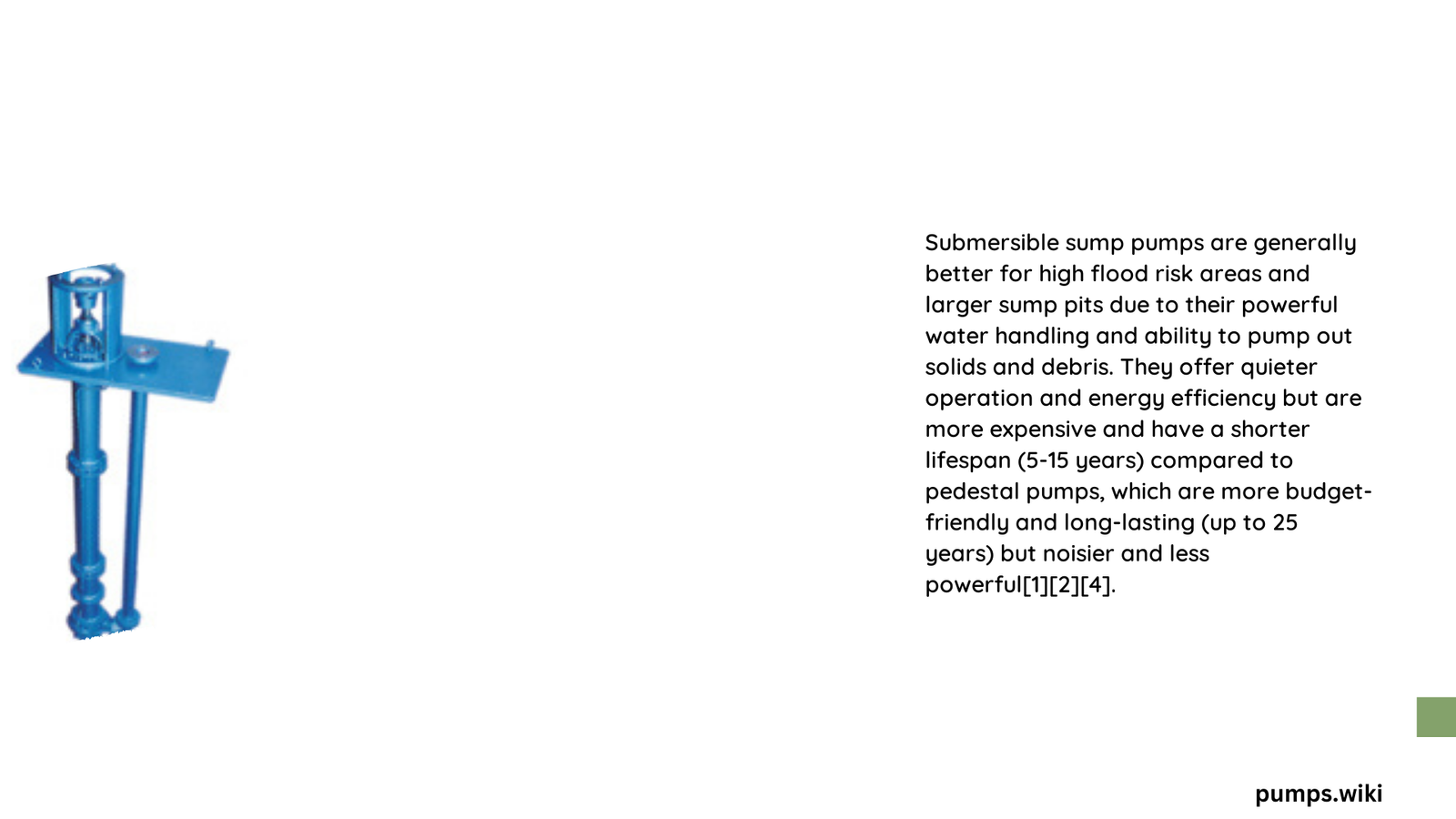Submersible sump pumps are generally considered superior to pedestal pumps due to their higher performance, quieter operation, and space-saving design. They offer greater flow rates, can handle larger water volumes, and operate more efficiently in heavy flooding situations. While they may have a shorter lifespan and higher initial costs, their benefits often outweigh these drawbacks for many homeowners, especially in flood-prone areas.
What Makes Submersible Sump Pumps Stand Out?
Submersible sump pumps have several key advantages that set them apart from their pedestal counterparts:
- Higher flow rates and horsepower
- Quieter operation
- Space-saving design
- Ability to handle debris and solid particles
- Better cooling due to underwater placement
Let’s dive deeper into these aspects to understand why submersible pumps are often considered the better choice.
How Do Performance Metrics Compare Between Submersible and Pedestal Pumps?

When it comes to performance, submersible sump pumps generally outshine pedestal pumps in several key areas:
Flow Rates and Horsepower
- Submersible Pumps:
- Flow rates: 2,000 to 4,000 GPM
- Higher horsepower ratings
- Pedestal Pumps:
- Lower flow rates
- Lower horsepower ratings
Submersible pumps are more powerful and can handle larger volumes of water, making them ideal for areas prone to heavy flooding.
Noise Levels
- Submersible Pumps: Significantly quieter due to underwater operation
- Pedestal Pumps: Noisier due to exposed motor above water line
The water surrounding submersible pumps helps muffle the sound of the motor, resulting in a much quieter operation compared to pedestal pumps.
Efficiency and Longevity
| Pump Type | Efficiency | Average Lifespan |
|---|---|---|
| Submersible | Higher | 5-15 years |
| Pedestal | Lower | 25-30 years |
While submersible pumps are more efficient in terms of power and water handling, they typically have a shorter lifespan compared to pedestal pumps.
What Are the Space-Saving Benefits of Submersible Sump Pumps?
One of the significant advantages of submersible sump pumps is their space-efficient design:
- Fully submerged in the sump pit
- Out of sight installation
- No additional floor space required in basement or crawlspace
This design not only saves valuable space but also contributes to a cleaner, more organized appearance in your basement or crawlspace.
How Do Submersible Pumps Handle High Water Volumes?
Submersible sump pumps excel in handling high water volumes:
- Can manage larger quantities of water efficiently
- Capable of pumping water with solid particles like dirt and sediment
- Ideal for areas prone to heavy flooding or frequent water issues
This capability makes submersible pumps a more reliable choice for homeowners in flood-prone areas or regions with frequent heavy rainfall.
What Are the Maintenance Requirements for Submersible Sump Pumps?
While submersible pumps offer many advantages, their maintenance can be more challenging:
Pros:
- Benefit from water’s cooling effect, potentially extending operational life
- Less frequent maintenance due to robust design
Cons:
- More difficult to access for maintenance and repairs
- May require professional assistance for complex issues
Despite these challenges, many homeowners find that the benefits of submersible pumps outweigh the maintenance considerations.
What Features Enhance the Performance of Submersible Sump Pumps?
Several features contribute to the superior performance of submersible sump pumps:
- Automatic Float Switches:
- Turn the pump on and off based on water levels
-
Ensure efficient and automated operation
-
Corrosion-Resistant Materials:
- Often made from cast iron or stainless steel
-
Help maintain pump integrity and extend lifespan
-
Thermal Overload Protection:
- Prevents motor from overheating and failing
- Enhances reliability and longevity
These features work together to create a more efficient, reliable, and long-lasting pumping solution.
How Does Installation of Submersible Sump Pumps Compare to Other Types?
The installation process for submersible sump pumps has its own set of considerations:
Ease of Setup:
- Designed to fit into standard sump pits
- Can be set up to operate efficiently with minimal additional setup
Flooding Risk Reduction:
- Higher flow rates and ability to handle solid particles
- Quickly and efficiently remove water from the sump pit
Sump Pit Compatibility:
- Versatile fit for various sump pit sizes
- Require larger sump pits compared to pedestal pumps
Costs and Timeframes:
- Initial costs higher than pedestal pumps
- Installation costs: $500 to $2,000 (varies based on complexity and location)
While the installation may be more complex due to their underwater placement, the benefits often justify the additional effort and cost for many homeowners.
In conclusion, submersible sump pumps offer numerous advantages over pedestal pumps, including higher performance, quieter operation, and space-saving design. While they may have a shorter lifespan and higher initial costs, their ability to handle larger water volumes and operate more efficiently in flooding situations makes them a superior choice for many homeowners, especially those in flood-prone areas.
